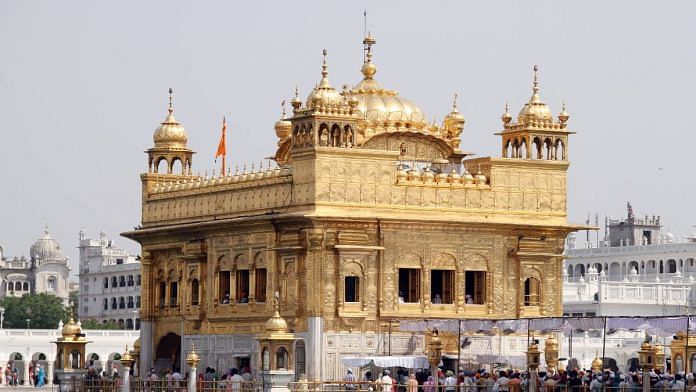In your visit to the Golden Temple in Amritsar, you don’t just see a structure. There are little things that complete the spiritual vibe of that place—the golden dome, the sarovar, the devotees. And what acts as a connecting force between them is the soft, continuous music. Every day, a group of 15 ragi jathas (hymn singers) sings about 31 rags over a span of 20 hours, an activity indispensable to the nature and veneration of the place. This music is a prominently expressive way of spiritually appreciating and worshipping the Adi Granth, the holy book of the Sikhs. Of this music, the harmonium forms the soul sound, a ‘key’ instrument.
But now the sound of harmonium may go mute at the Harmandir Sahib.
The Akal Takht Jathedar Giani Harpreet Singh has ordered the Shiromani Gurdwara Parbandhak Committee (SGPC) to replace the harmonium with more traditional string instruments and phase it out within three years. According to the Takht, Harmonium is an instrument with colonial roots, hence not the most appropriate medium for delineation of the Gurbani.
In an era where India’s past and ‘purity’ are constantly being dug up and debated, the humble harmonium has become the latest victim. The irony: music has always been seen as a global connector and not something that divides.
Also read: Zoya Akhtar’s films on rich people appealed to the masses. ‘The Archies’ does not
History of the harmonium
Harmonium was developed by Alexandre Debain of France in 1840 and patented. Before that, many, including Anton Haeckl and Christian Gottlieb Kratzenstein worked on earlier prototypes. Later, Victor Mustel in Paris and Jacob Estey in the US made improvements to the patented harmonium and brought it near its contemporary form.
Harmonium became a staple for Western classical music, being played in church, and used by multiple music producers such as bohemian composer Antonín Dvořák, German composer Sigfrid Karg-Elert, French composer Louis Vierne among others during the early 1900s. By now, it was smaller in size than a pipe organ, much lighter in weight, and efficient. However, in the 1930s, with the advent of the electronic organ, the demand for harmonium started to fall.
It was the British who carried the harmonium to India, to their homes and churches. In India, musician Dwarkanath Ghosh, who owned a manufacturing unit for musical instruments, modified the harmonium. The foot-operated bellows beneath the keyboard in the European harmonium were replaced by the hand-operated bellows at the rear. Drone knobs were added to the instrument to produce harmonies in Indian classical music. A scale-changing technique was also added to the Indian version of the instrument. By 1915, India had become the leading manufacturer of the harmonium. This new instrument was more durable, cost-effective, and easier to maintain and repair.
Thus, it can be said that the harmonium found itself a second life in India where to the date, musicians use it in a variety of productions — not just in rigid classical music but also in Bollywood songs, vernacular compositions among others.
Also read: Cinema wronged domestic workers — Hum Aapke Hain Koun to Kal Ho Naa Ho. The script’s changing
Music and boundaries beyond
Ask, and most Indians would not know that harmonium is not an Indian instrument. The question is that if harmonium in its current form does not even bear similarities to the Western one, then does it not essentially become something of Indian descent? And by calling it colonial, are we not doing injustice to the 20th century Kolkata music manufacturers and musicians who led harmonium to the peak of its utility? The western harmonium of the past and the markedly different Indian version are virtually two separate instruments sharing the same name. Today, the harmonium is more strongly attached to the Indian classical music than French, American, or British.
The idea of music is to transcend boundaries or distinctions that separate people. Music is for everyone to enjoy, for it treats everyone equally, and does not restrict its expression to certain groups of people. Hence, to deliberate and ponder over its roots is akin to disrespecting the genuine nature of this art.
Are our religious institutions so fragile that something that is supposed to just accompany an expression of our devotion can so easily challenge our belief systems, or turn blasphemous? We must introspect how the divisions we create are baseless and against the very notions of faith that we put firmly into people and places, and defeat the sanctity and strength of it.
Yashika Singla is an intern with ThePrint. Views are personal.
(Edited by Anurag Chaubey)



